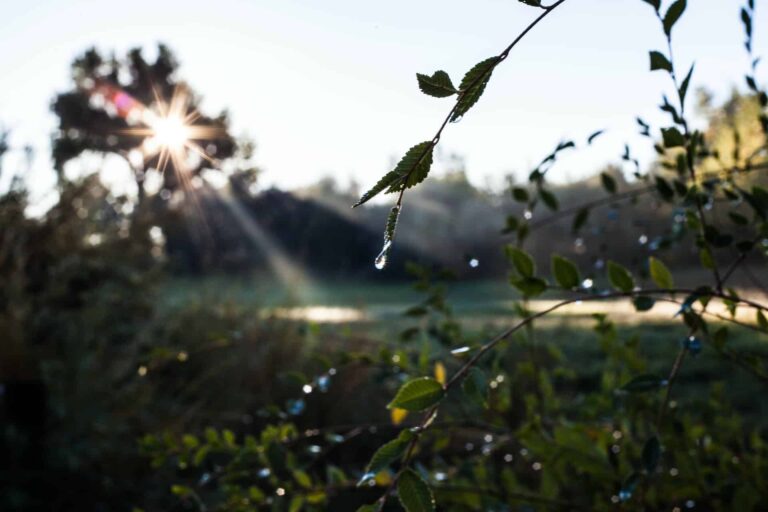Water conservation plays a pivotal role in promoting sustainable agriculture practices. As responsible farmers, it is imperative for us to take proactive measures to limit water waste and ensure the efficient utilization of this vital resource.
In this article, we will explore a range of practical strategies and actionable tips that can be implemented on your farm to save water. By adopting these measures, we can contribute to preserving this precious resource and enhancing our agricultural operations’ overall sustainability and resilience.
Table of Contents
Efficient irrigation techniques
Implementing efficient irrigation techniques minimizes water waste and optimizes irrigation practices. With these techniques, farmers can ensure that water is delivered to crops in the most effective and targeted manner, avoiding unnecessary losses. Here are some key strategies to consider:
1. Drip irrigation
This method involves delivering water directly to the plant’s root zone through a network of tubes or pipes with small emitters. It provides precise water application, minimizing evaporation and runoff. Drip irrigation is particularly effective for row crops, orchards, and gardens.
2. Precision sprinklers
Utilizing sprinkler systems that are designed for uniform water distribution is essential. Adjustable nozzles, pressure regulators, and timers can help deliver water accurately and evenly, reducing overspray and ensuring adequate coverage while minimizing water waste.
3. Micro-irrigation systems
These systems deliver water directly to the plant’s root zone, typically through low-volume emitters. They are ideal for container plants, potted crops, or areas with specific water requirements. Micro-irrigation systems ensure targeted watering, reducing the risk of overwatering or underwatering.
5. Use of moisture sensors
Employing soil moisture sensors can provide real-time data on soil moisture levels. This allows farmers to irrigate only when necessary, based on the actual needs of the plants. By avoiding over-irrigation, water waste is minimized, and crop health is optimized.
Implementing these efficient irrigation techniques empowers farmers to significantly reduce water waste, conserve valuable water resources, and enhance the health and productivity of their crops. As we progress, let’s explore additional strategies that can further amplify water conservation in agriculture.
Read also: Water consumption rates: which industries use the most?
Crop selection and planning
Crop selection and planning are fundamental aspects of water conservation in agriculture. Farmers can optimize water usage and ensure sustainable agricultural practices by carefully choosing crops and strategically planning their cultivation. Here’s a closer look at the key considerations:
- Selecting drought-resistant crops:
- Choose crops with natural drought tolerance and can thrive with limited water resources;
- Opt for varieties known for their ability to withstand dry conditions and efficiently manage water;
- Consult local agricultural extension services or research institutions for information on drought-tolerant crop varieties suitable for your region.
- Crop rotation and diversification:
- Rotate crops in a planned sequence to minimize water demands and reduce the risk of soil depletion;
- Diversify plantings by incorporating a mix of crops with varying water requirements;
- This practice helps to balance the overall water consumption, as different crops have different water usage patterns and rooting depths.
- Strategic planting and harvesting schedules:
- Plan planting and harvesting schedules based on the availability of water resources;
- Consider local climate patterns, rainfall distribution, and the timing of irrigation supplies;
- Farmers can optimize water usage and minimize waste by aligning crop cycles with water availability.
- Optimal crop spacing:
- Proper crop spacing is crucial to prevent overcrowding and competition for water;
- Adequate spacing allows each plant to access sufficient water and nutrients without excessive competition;
- Consult crop-specific guidelines or experts to determine the appropriate spacing for different crops in your farming system.
- Integration of cover crops:
- Introduce cover crops that help improve soil moisture retention and reduce evaporation;
- Cover crops act as a protective layer, reducing water loss from the soil surface and enhancing water infiltration;
- Select cover crops that are well-suited to the local climate and contribute to the overall water conservation goals.
Soil and water management
Effective soil and water management practices are essential for conserving water in agriculture. Farmers can optimize water usage, improve soil health, and enhance overall water efficiency by implementing these practices. Let’s delve into the key aspects of soil and water management:
1. Maintaining soil moisture
Regularly monitoring soil moisture levels helps farmers determine irrigation requirements accurately. Tools like soil moisture sensors or manual testing methods can assess moisture content at different soil depths. This information enables farmers to apply water only when necessary, preventing over-irrigation and water waste.
2. Mulching for water conservation
The application of organic or inorganic mulch materials, such as straw, wood chips, or plastic films, to the soil surface can significantly reduce evaporation. Mulching provides a protective layer that conserves soil moisture and also helps control weed growth, reducing competition for water and nutrients.
3. Soil amendments and conservation practices
Incorporating organic matter, such as compost or manure, into the soil improves its structure, water-holding capacity, and nutrient retention. Conservation practices like contour plowing, terracing, or strip cropping help prevent soil erosion and retain moisture in the root zone.
4. Proper drainage systems
Effective drainage systems are crucial to prevent waterlogging and excessive runoff. Poorly drained soils can lead to water stagnation, root suffocation, and nutrient leaching. Where necessary, maintaining proper field grading and implementing subsurface drainage methods ensure proper water management.
5. Rainwater harvesting
Collecting and storing rainwater runoff from roofs, fields, or other catchment areas provides an additional water source for irrigation during dry periods. Installing appropriate rainwater storage systems like tanks or ponds ensures water availability during water scarcity.
6. Water recycling and reuse
Implementing systems to capture and treat wastewater for reuse in irrigation reduces the reliance on freshwater sources. Treating and reusing water from sources like ponds, drainage ditches, or on-farm water storage systems significantly reduces water consumption.
Read also: World Water Day 2023, UN warns: unsustainable use, risk of global water crisis
Water conservation creates a sustainable future for farming
Water conservation in agriculture is crucial for sustainable farming practices. By implementing efficient irrigation techniques, selecting appropriate crops, and practicing effective soil and water management, farmers can reduce water waste and enhance overall water efficiency.
Strategic crop selection and planning, precision irrigation, soil moisture monitoring, mulching, and proper drainage systems all contribute to optimized water usage and improved soil health.
By embracing these measures, farmers can make a significant impact on preserving water resources and ensuring the long-term viability of agriculture. Together, let’s prioritize water conservation and create a sustainable future for farming.












